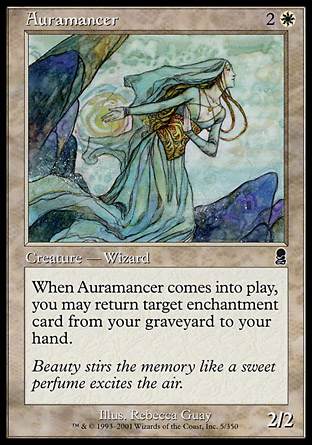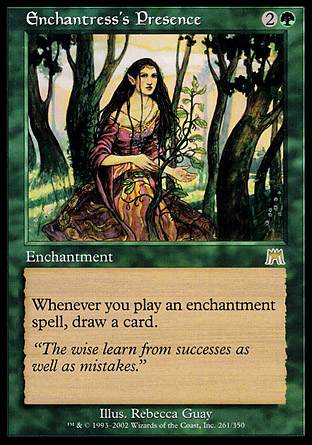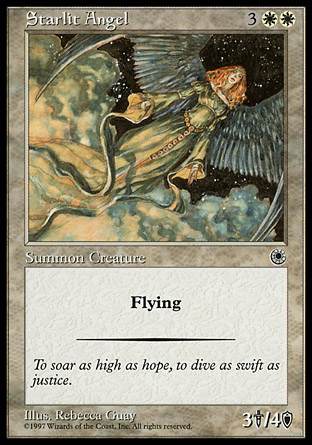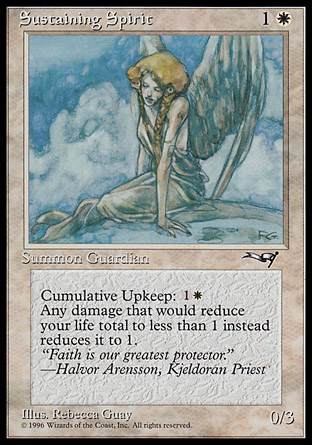If you’re familiar with Magic: the Gathering and other such games, you know that usually, you come to the gaming table with a deck you built ahead of time, and you know generally how to play the deck so that it wins.
The only problem with this setup is that boredom can set in after a while. After you’ve played the same two or three decks against another player, it almost becomes predictable–you play this card, then this one and this one, and then in a few turns, you win. There’s not a lot to shake it up.
That, my friend, is where Mental Magic comes into play (quite literally). If you want an unpredictable Magic game that makes you REALLY think about the cards you’re playing, give it a shot!
How to Play
A game of Mental Magic always begins with a big random stack of cards and at least two players (though it’s hilarious with four or more). Each player draws seven cards to fill up their hand, then they choose who goes first (first player doesn’t draw). Then the game begins!
The basic challenge of Mental Magic: to play these randomly-drawn cards not as themselves, but as another card with the exact same mana cost. For instance, if I drew a Fog (with the mana cost of 1 green), I could not play that card as Fog–I would have to think of another card which costs 1 green instead, such as Noble Hierarch, Llanowar Elves, Rancor, Oxidize, etc. Once you have played a card name, you cannot play another card by that same name until the game is over.
This requires you to have more internal card knowledge, not depending on a decklist or an established strategy, but depending on your own wits. This is a great way to test how much Magic knowledge you have, AND you can learn from your group of friends as you play.
Now, from here, Mental Magic’s rules diverge greatly depending on the group you learn it from. There are several different rules sets out there, so I’m going to briefly cover a few of them under the following headings.
Mental Magic the Mike Flores Way
- Players can play out of a single shared library or have separate libraries.
- You can play any card facedown as a land which can produce 1 mana of any color.
- Make sure to have a good mix of colors and mana costs, for the most randomized and fun game.
- All lands should be taken out of the stack of cards beforehand, so they don’t get confusing.
- Don’t play deck-searching cards, land-return cards, or cards that get stuff back out of the graveyard–these effects are too overpowered for Mental Magic.
- Follow the Type 1.5 Banned/Restricted list.
Source:
Mental Magic: The Beginning
Mental Magic the Team War Zone Way
- Players have separate libraries.
- Some nonbasic lands may be allowed, and played as any other land card.
- Basic lands are sorted into a separate pile and divided amongst the players–these piles are called “Utopia Libraries,” and these lands can be played facedown or faceup as a land which can generate 1 mana of any color.
- When you draw as a part of your turn, you can either draw a card from your regular library or from your Utopia Library.
- Any spell that targets a player’s library can target either the regular one or the Utopia Library.
- When a card is discarded to the graveyard, you can name it as a particular card, but you don’t have to.
- Certain cards’ rules texts have to be bent a bit for Mental Magic’s unusual format, such as Gaea’s Blessing, Demonic Tutor, Timetwister, etc. See linked rules document for a complete list and appropriate rulings.
Source:
Mental Magic Rules V1.21
Mental Magic the Steven Glowacki Way
- Players preferably have separate libraries.
- Lands can be left in the stack or taken out at players’ discretion.
- Certain card mechanics, such as Domain, spells requiring certain land type, library searching, graveyard abilities, flashback, etc., should preferably not be played, since they can be too strong for the format or may not work properly.
- The cycle of Wishes (Golden Wish, Burning Wish, etc.) should preferably not be included.
- Be careful with mechanics like Cycling, Madness, and Morph. (See linked rules document for more on this.)
Source:
Laying the Rules for Mental Magic
Footnote: Mental Magic Strategies, and Why They’re Kind of Unnecessary
There are several articles out there discussing ways to build up a good stack of cards for Mental Magic, and what kinds of cards and plays to set up. For instance, Mike Flores’ Mental Magic: Basic Strategy article demonstrates a few basic things, and ChannelFireball’s Travis Woo discusses more metagame tactics on Breaking Mental Magic.
Trying to strategize is great, and if that helps you enjoy the game more, then go right ahead. But I think that actively strategizing to win a game of Mental Magic kind of misses the point. After all, Mental Magic’s not really a tournament, and it’s not really a real format of Magic (at least, not yet). It’s basically a way to expand and test your knowledge of the cards that have been printed, and it’s all up to chance what kind of cards you draw.
Yes, you can come up with some cool combos, very splashy effects, and even a game-winning effect on occasion, but that’s just icing on the cake. Mental Magic offers you a rare opportunity to learn from other players about cards you may have never seen printed, or to use 2 or 3 cards together in a way you would have never tried before. It offers room to innovate, room to try dumb things that actually end up working when they hit the table. It’s great just as it is; it provides a lot of laughs and a lot of camaraderie along the way, if you don’t get too caught up in trying to “win win win.”
Further Reading
Mental Magic @ MTGSalvation.com Wiki
Mental Magic Format @ Wikibooks.org




















































































































